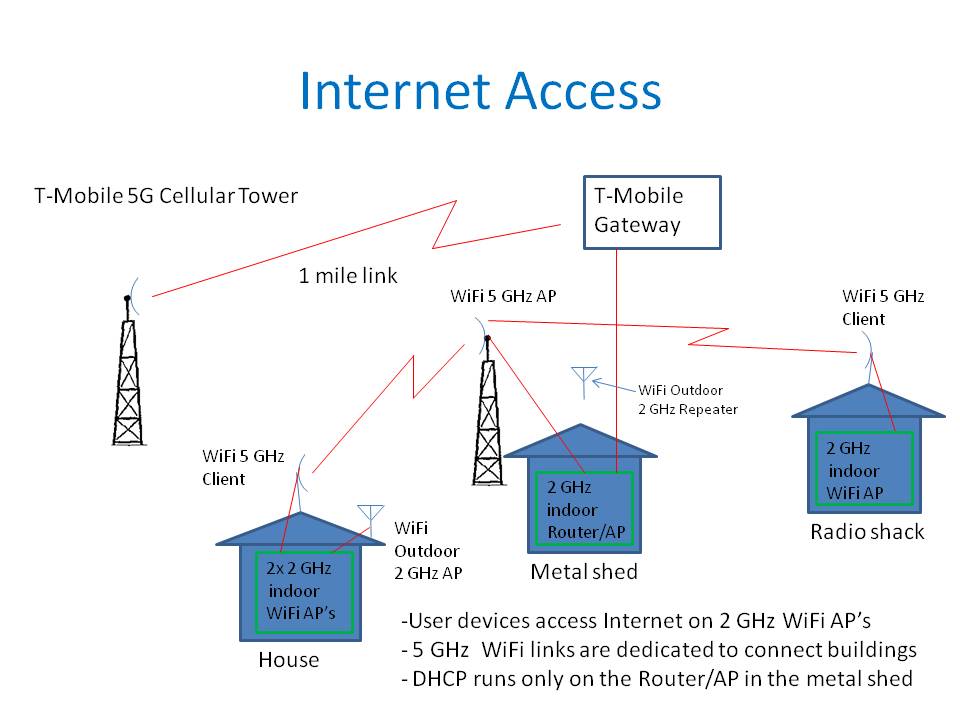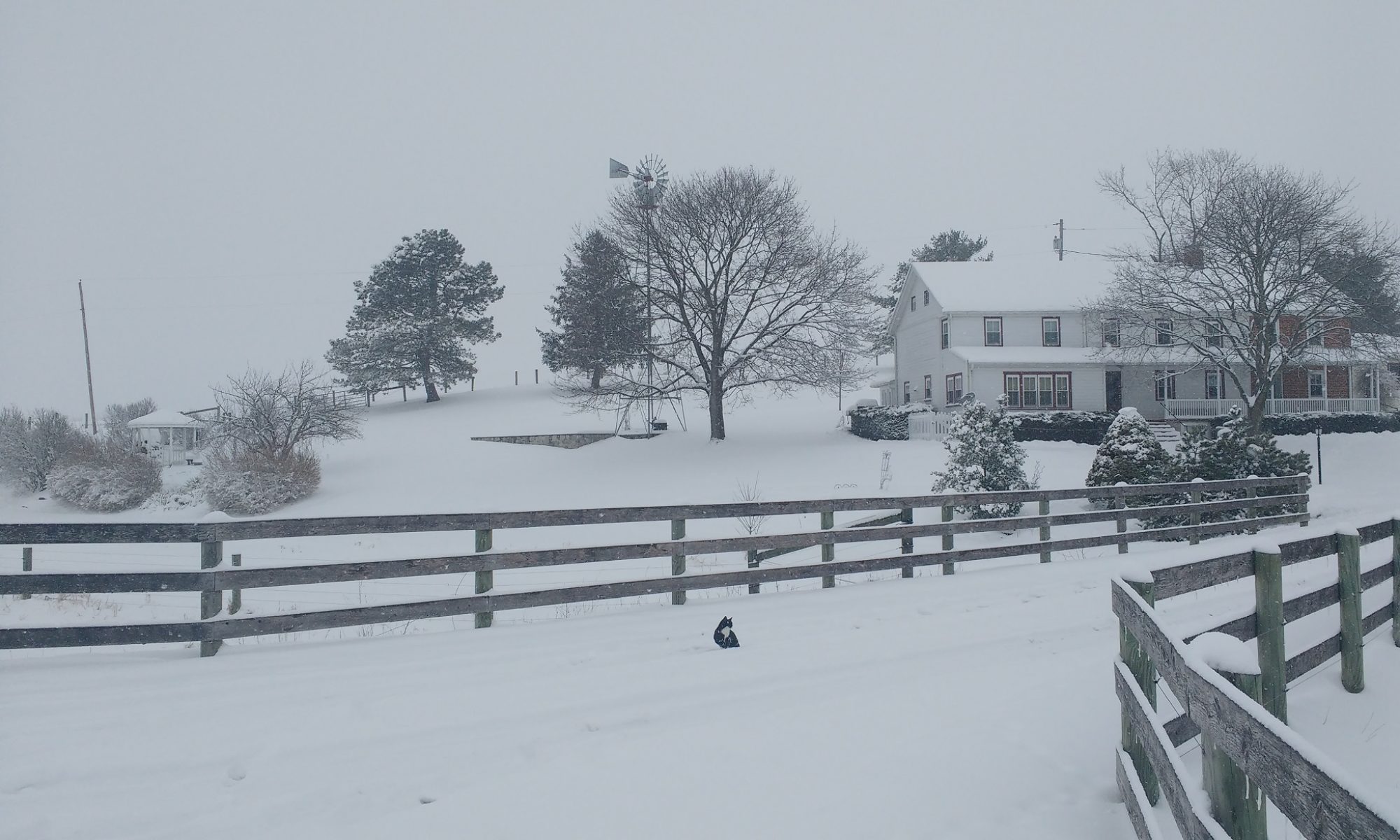The radio shack and farm are in a rural area with only power lines and traditional copper telephone lines available for utilities. Originally, the 2 GHz WiFi local access system was connected to an HDSL modem providing 6 Mbps Down-Link (DL) and 400 kbps Up-Link (UL) service over the copper telephone lines. Later, 5 GHz WiFi was used to make a 1.1 mile connection to a remote house with broadband cable Internet service in the nearby village of Saint Thomas. DL rates of over 60 Mbps and UL rates of over 15 Mbps were achieved over the remote WiFi link. In 2022, access was changed again to use Home Internet Service by T-Mobile using 5G cellular. One of their towers is only about 1 mile away. DL rates of about 90 Mbps and UL rates of about 50 Mbps were typical.

The WiFi system supports Internet access for a primary desktop PC permanently located in the radio shack . Any laptops brought to the shack can access the Internet over the 2 GHz AP in the radio shack. The 2 GHz AP in the radio shack also provides remote access for a Mr Cool DIY mini-split air-conditioner and heat pump, and a smart thermostat and power outlet for HVAC in the shack. The radio equipment can be turned ON/OFF remotely using a WiFi controlled power strip
Outdoor access around the buildings are supported by an Outdoor AP mounted on the roof of the house and a bridge unit mounted near the metal shed.
A number of cameras are connected to the WiFi system for security and monitoring farm operations around the buildings.
WiFi Equipment and Configuration Details
The 5 GHz System using tp-link equipment to connect the buildings
– The AP is a CPE610
– The 2 clients are CPE510’s
The 2 GHz Local Access System using tp-link equipment
– The 4 AP’s are TL-WR940N’s (2x in the house, 1 in the shed and 1 in the radio shack)
– The outdoor AP is an EAP110
– The bridge is a WA855RE
Hints:
– Configure security for WPA-PSK/WPA2/AES for good protection and to avoid speed limitations that happen in older security modes.
– Configure each unit for the desired operating mode (AP, client, bridge) and parameters via a direct connection to a laptop per the manuals.
– The RTS parameter was set to 100 bytes threshold for the 5 GHz units to trigger RTS/CTS operation for normal large packets. Since the clients and AP can not “hear” each other, hence the bridge, the WiFi Listen-Before-Talk protocol is compromised. RTS/CTS operation provides a means to mitigate this problem, but the default setting disables RTS. Setting this to 100 bytes will cause it to trigger under significant traffic situations.
– Disable DHCP in all units except the router at the shed. This results in a single DHCP on the LAN (however the T-Mobile gateway is in series to the WAN and adds a layer of DHCP which can not be diabled on top of the entire LAN making everything on the LAN double-NAT to the WAN Internet)
– Use strong passwords on the radio links for security.
– Setup the entire system at one place and test it for proper operation before installing the units outside.
